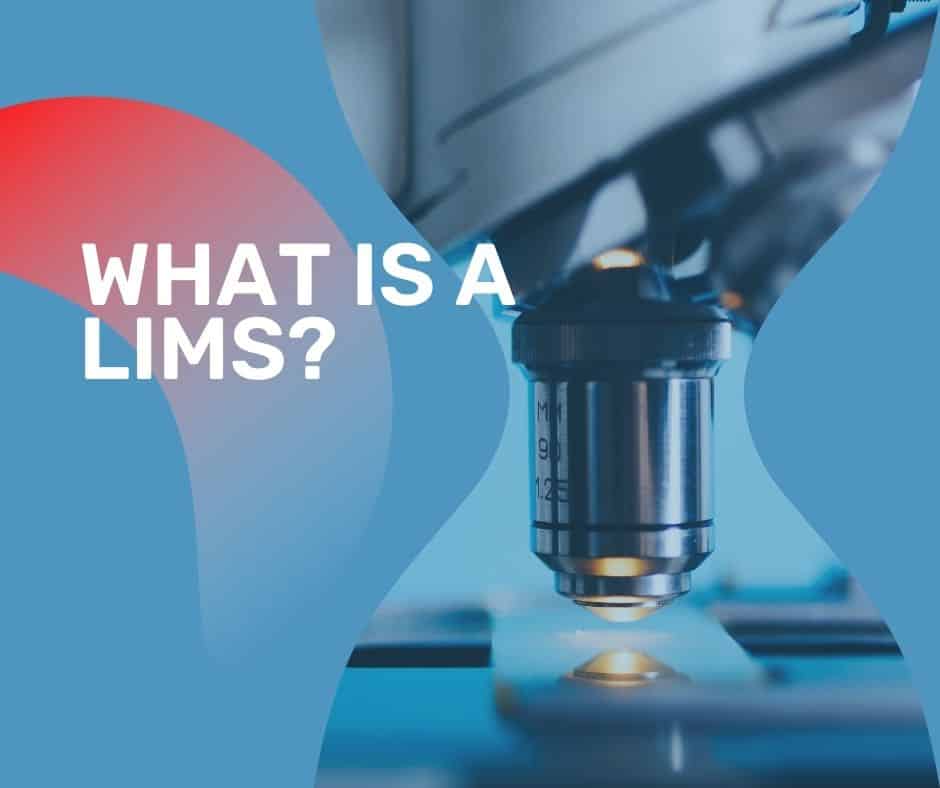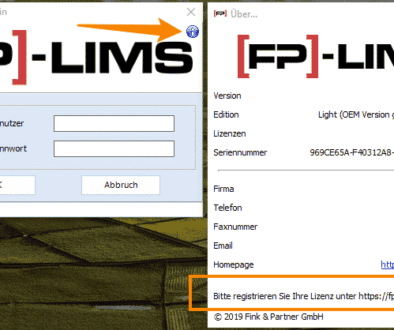
What is a LIMS? Definition and Meaning
What is a LIMS? What does the term mean? The term LIMS stands for Laboratory Information Management System. So the definition and meaning is: While laboratory software is concerned with laboratory data processing in chemical, physical, biological, and medical laboratories, a LIMS is different.
A laboratory information and management system is used to control work processes in such a way as to ensure that activities are carried out efficiently. LIMS systems support laboratories of all types and sizes in organizing or managing their daily process flows and in evaluating all data. The term LIMS is only standardized to a certain extent. This is because a LIMS can be used in many different areas and can be individualized depending on the application and requirements.
A laboratory information and management system (LIMS) is an IT application. A LIMS supports laboratory operations with regard to the administrative and coordinative tasks of sample processing and sample management. But it also simplifies the acquisition and evaluation of determining measurement data/analysis data. LIMS work along with a generic laboratory workflow/requirements in a pre-structured, standardized form. This applies across different industries. Process steps that occur are, for example, sample registration, specification of the scope of the analysis, data acquisition of measurement results, evaluation/reporting, and management report.
In the best case, a LIMS offers a complete solution tailored to the laboratory. In order to fulfill this, the performance of the LIMS system is adapted to the required functions and specifics of the respective laboratory process. This is implemented in the consulting process within the roll-out at reasonable costs – use our flexible LIMS software for this purpose.
Find out below all the basics you need to know about a LIMS.
What is the function of a LIMS?
A LIMS accompanies the laboratory personnel in all laboratory processes. These in turn can be divided into the phases of sample planning and preparation, sample execution with sampling and sample processing, and control and evaluation. A LIMS is able to map all these phases and supports the user in the best possible way by providing appropriate assistance through the LIMS system. To manage samples is thus the main function of a LIMS.
A LIMS is therefore a solution that enables laboratories to organize their processes efficiently and clearly. Companies benefit by significantly reducing the daily manual effort required for classic processes and by making data management easier.
Important core functions of a LIMS are:
- Sample, inventory and data management:
When samples come into the lab, they are logged and registered in the system, including all customer data associated with the sample, as well as the time and date the sample was received. LIMS also assigns a unique identifier to the sample, such as a unique barcode that is attached to the sample and used to track it through the lab, whether it is sitting on a shelf in the freezer or being processed by a mass spectrometer. LIMS can also be used to manage inventories of reagents and other lab resources and materials, including details such as expiration dates, storage requirements for samples and reagents, and quantities of supplies. - Instrument integration and workflow management:
LIMS can be connected to laboratory instruments and applications, making it easy to share information about a sample and start experiments directly from the software. These solutions can also automatically assign tasks related to a sample, let researchers know where samples should go, and suggest instruments that are appropriate for a particular experiment. During experiments, the LIMS can monitor instrument runs and report errors or problems as they occur. Laboratories can also use the system to prioritize runs and perform batch runs. Finally, LIMS can import the results of experiments into analysis software for analysis and interpretation, or forward the sample to other instruments for further testing. - Quality and Compliance:
These systems provide centralized access to quality control data. For laboratories that must meet certain regulatory requirements, LIMS can provide audit trails for samples and data, as well as quality control and quality assurance information.
What is a LIMS? Important functionalities at a glance
As already mentioned, a LIMS supports the laboratory staff in all laboratory process steps. For this purpose, the LIMS software contains a lot of functionalities and modules that map different subject areas or process steps. Important components are:
Benefits and advantages of a LIMS If a LIMS is used consistently and intensively in the laboratory, this brings quite a few advantages. Here is an overview of the most important advantages of a LIMS:
Central data storage
With a LIMS, data is no longer maintained manually or via Excel files or in books but flows automatically into the LIMS system. The great advantage of this approach is that all users are always up to date. The database is always up to date; problems caused by outdated or incorrectly maintained data do not arise in the first place. The use of a LIMS, therefore, has a positive influence on data up-to-dateness.
Improving collaboration
With a LIMS, all data can always be easily found and viewed by anyone with authorization. Of course, this also simplifies collaboration with external departments, for example. The fact that the processing status can be called up at any time promotes transparency. Everyone involved is able to plan and work better. Obstacles caused by data not being available on paper, access blocks to files, or missing information about the processing of samples are completely eliminated.
Minimization of the administrative burden
The time required for daily tasks in the laboratory can be significantly reduced by using a LIMS. Many tasks can be simplified or even fully automated with the help of LIMS software. This allows everyone involved to finally devote more time to the analysis work itself.

Important LIMS regulations
In a number of industries – for example, in the pharmaceutical, biotechnology, and food industries – there are clear regulations regarding a LIMS. In these industries, the following authorities play an important role:
- EMA (European Medicines Agency)
- CHMP (Committee for Medical Products for Human Use)
- COMP (Committee for Orphan Medical Products)
- PRAC (Pharmacovigilance Risk Assessment Committee)
- FDA (USA Food & Drug Administration)
To find out which requirements and guidelines need to be met, it is best to work with the relevant authorities from the outset and refer to the latest documents.
Which LIMS providers are there? If a company has decided to introduce a LIMS, there are various ways to implement the topic. Both ways bring corresponding advantages and disadvantages.
The following questions can be helpful in determining which LIMS is right for you, given the number of different LIMS available:
- What exactly does the company need?
- How large is the company’s budget?
- What should cooperation with a LIMS provider look like?
- When should the LIMS be ready for use?
- To what extent will processes be optimized with LIMS?
- Is the company more competitive with LIMS?
There are a lot of LIMS software providers nowadays. Fink & Partner’s LIMS [FP]-LIMS is a LIMS solution that has been used successfully for years in companies and various industries worldwide and is characterized above all by its high flexibility and security.
LIMS as an important part of the quality management process
When asking the question “What is a LIMS?” one should not forget the aspect of quality management. The introduction of a modern LIMS can be an important part of the internal quality management process for laboratories in all industries. After all, quality is an important factor for customer satisfaction in many companies. Provided that certain requirements are met, LIMS software can make a major contribution to optimizing the QM process in the company.

The following LIMS aspects can influence quality management:
LIMS as solution software for its users
The user in the laboratory is concerned with the functionality of the software and the optimization of the workflows in the laboratory. He works with a clearly structured and comprehensibly navigable system and benefits mainly from the following functions:
- Order registration and sample registration
- Specification of the scope of the examination
- Support for sample distribution, processing, and merging of incoming data
- Recording of results (manual, online)
- Release of test results
- Reporting / evaluation / report
In addition, there are many other functions that are offered in the LIMS software basic package or as an extension.
The basic LIMS software is usually adapted to the individual characteristics of a laboratory in the course of a design and implementation phase. Frequently, LIMS applications evolve during their use. Depending on the complexity, this can result in highly specialized systems. In the beginning, the basic functions are used, which are supplemented over time with special evaluations, statistics, test equipment management, or quality control charts. Further, such a LIMS system grows by connecting additional measuring devices via interfaces.


